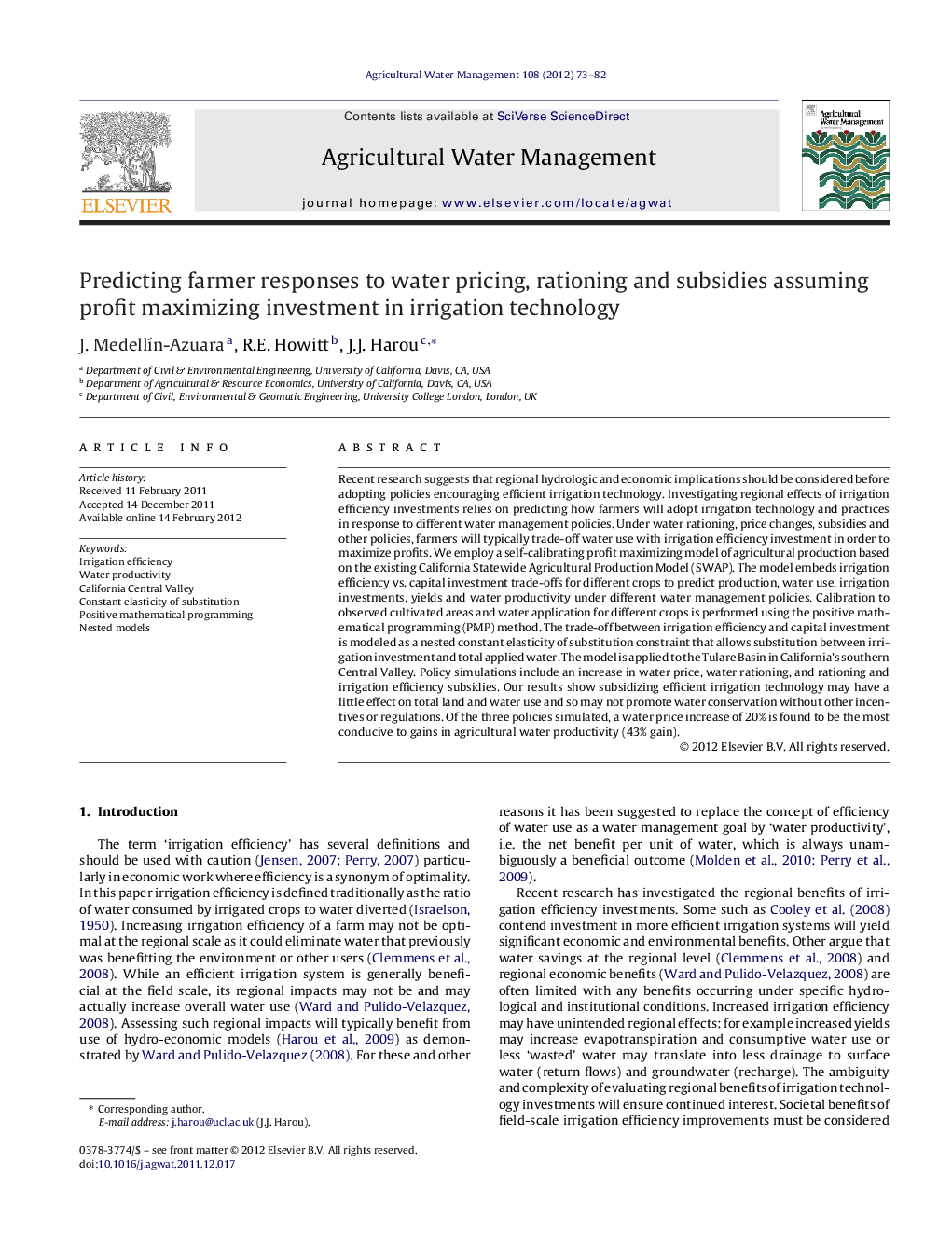| کد مقاله | کد نشریه | سال انتشار | مقاله انگلیسی | نسخه تمام متن |
|---|---|---|---|---|
| 4479135 | 1622971 | 2012 | 10 صفحه PDF | دانلود رایگان |

Recent research suggests that regional hydrologic and economic implications should be considered before adopting policies encouraging efficient irrigation technology. Investigating regional effects of irrigation efficiency investments relies on predicting how farmers will adopt irrigation technology and practices in response to different water management policies. Under water rationing, price changes, subsidies and other policies, farmers will typically trade-off water use with irrigation efficiency investment in order to maximize profits. We employ a self-calibrating profit maximizing model of agricultural production based on the existing California Statewide Agricultural Production Model (SWAP). The model embeds irrigation efficiency vs. capital investment trade-offs for different crops to predict production, water use, irrigation investments, yields and water productivity under different water management policies. Calibration to observed cultivated areas and water application for different crops is performed using the positive mathematical programming (PMP) method. The trade-off between irrigation efficiency and capital investment is modeled as a nested constant elasticity of substitution constraint that allows substitution between irrigation investment and total applied water. The model is applied to the Tulare Basin in California's southern Central Valley. Policy simulations include an increase in water price, water rationing, and rationing and irrigation efficiency subsidies. Our results show subsidizing efficient irrigation technology may have a little effect on total land and water use and so may not promote water conservation without other incentives or regulations. Of the three policies simulated, a water price increase of 20% is found to be the most conducive to gains in agricultural water productivity (43% gain).
► We predict how farmers will adopt irrigation technology.
► We simulate water price, water rationing, and irrigation efficiency subsidies.
► We employ a self-calibrating profit maximizing model of agricultural production.
► The model is applied to the Tulare Basin in California's southern Central Valley.
Journal: Agricultural Water Management - Volume 108, 15 May 2012, Pages 73–82